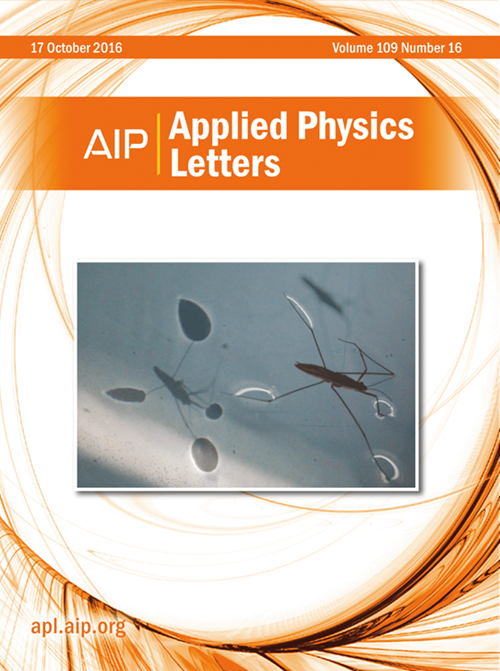Multifunctional VO2 metasurface thermal emitter with switchable radiation bandwidth and direction
IF 3.5
2区 物理与天体物理
Q2 PHYSICS, APPLIED
引用次数: 0
Abstract
The controllability of the spectral width and intensity of long-wave infrared (LWIR) emission is essential for various applications, including optical stealth, infrared radiation sources, and infrared lasers. Here, we proposed a multifunctional LWIR metasurface emitter with a switchable radiation state, which consists of germanium (Ge) rectangular pair resonators placed on a vanadium oxide (VO2) film. By manipulating the reversible metal-to-insulator phase transition of phase change material VO2, the spatial and spectral emission characteristics could be dynamically controlled. The high loss of metallic VO2 enables broadband emission in the LWIR band. The average emissivity in the 8–12 μm range reaches 91.3% and exhibits wide-angle emission properties. When the VO2 is transformed to the insulating phase, the coupling effect of the symmetry-breaking rectangle with two quasi-bound states in the continuum modes enhances the emission intensity of VO2 at a selective wavelength. This results in narrowband emission with a high-quality factor (Q-factor) and high directional selectivity. Notably, the emission peak's linewidth is only 28 nm, with a Q-factor of 293, and the average emissivity in the 8–12 μm range drops to 9.4%. Overall, the proposed metasurface device achieves an LWIR emissivity switching ratio of 9.7 between its two operating modes, showcasing significant differences in spectral and spatial radiation characteristics.求助全文
约1分钟内获得全文
求助全文
来源期刊

Applied Physics Letters
物理-物理:应用
CiteScore
6.40
自引率
10.00%
发文量
1821
审稿时长
1.6 months
期刊介绍:
Applied Physics Letters (APL) features concise, up-to-date reports on significant new findings in applied physics. Emphasizing rapid dissemination of key data and new physical insights, APL offers prompt publication of new experimental and theoretical papers reporting applications of physics phenomena to all branches of science, engineering, and modern technology.
In addition to regular articles, the journal also publishes invited Fast Track, Perspectives, and in-depth Editorials which report on cutting-edge areas in applied physics.
APL Perspectives are forward-looking invited letters which highlight recent developments or discoveries. Emphasis is placed on very recent developments, potentially disruptive technologies, open questions and possible solutions. They also include a mini-roadmap detailing where the community should direct efforts in order for the phenomena to be viable for application and the challenges associated with meeting that performance threshold. Perspectives are characterized by personal viewpoints and opinions of recognized experts in the field.
Fast Track articles are invited original research articles that report results that are particularly novel and important or provide a significant advancement in an emerging field. Because of the urgency and scientific importance of the work, the peer review process is accelerated. If, during the review process, it becomes apparent that the paper does not meet the Fast Track criterion, it is returned to a normal track.
 求助内容:
求助内容: 应助结果提醒方式:
应助结果提醒方式:


